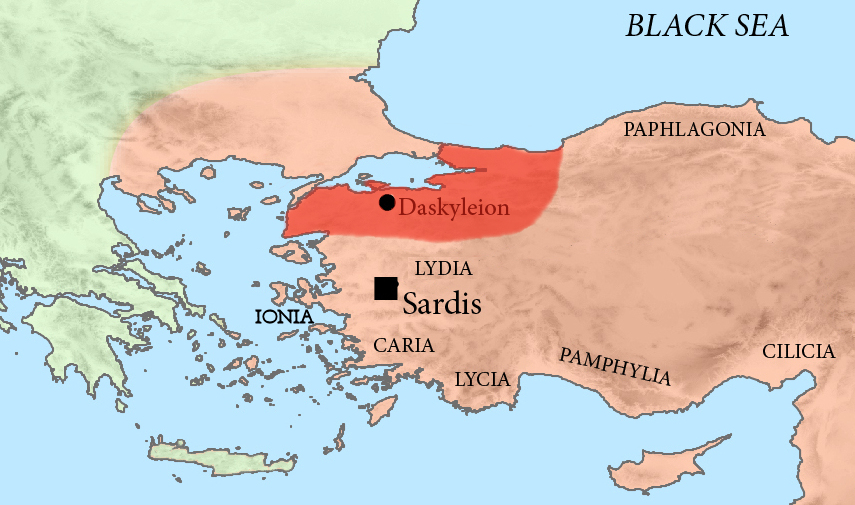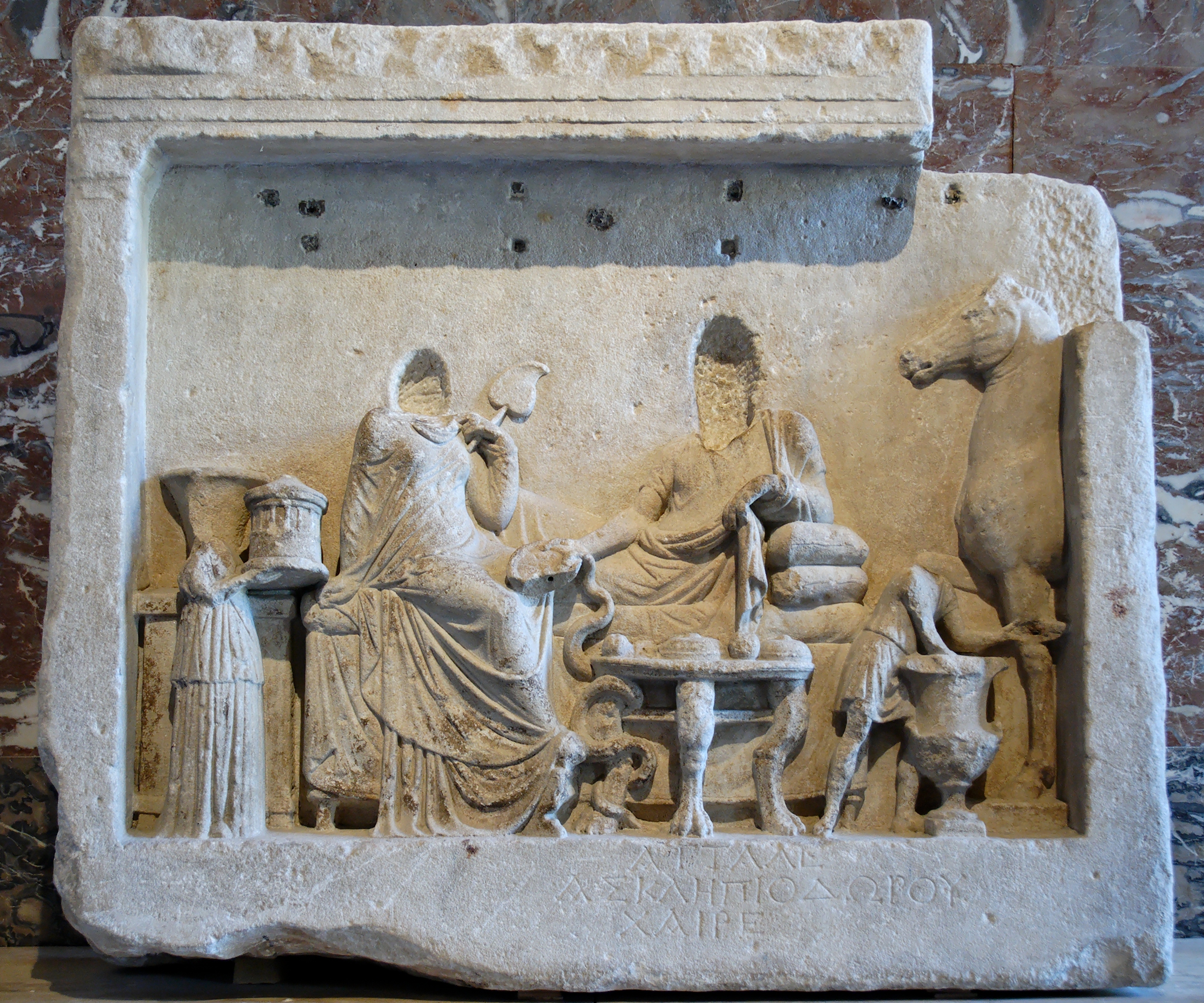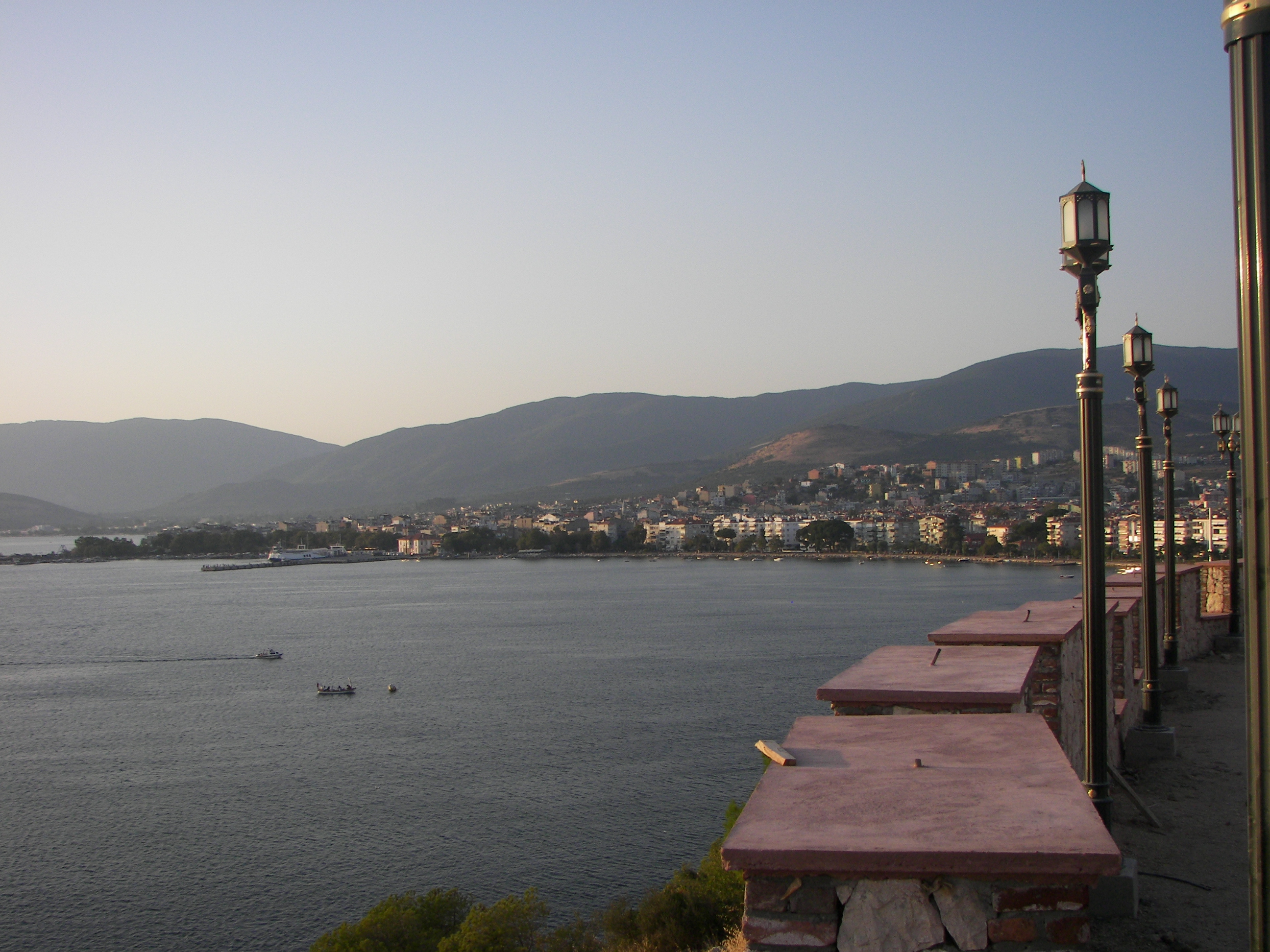|
Pharnaces II Of Phrygia
Pharnaces II (Old Iranian: ''Farnaka''; fl. 430 BCE - 422 BCE) ruled the satrapy of Hellespontine Phrygia under the Achaemenid Dynasty of Persia. Hellespontine Phrygia (Greek: Ἑλλησποντιακὴ Φρυγία) comprised the lands of Troad, Mysia and Bithynia and had its seat at Daskyleion, south of Cyzicus, Mysia (near modern-day Erdek, Balıkesir Province, Turkey). His grandfather, Artabazos I of Phrygia, was the founder of the Pharnacid dynasty. Pharnaces II followed as satrap either upon the death of his father, Pharnabazus I, or directly upon the death of his grandfather. He was succeeded by his son Pharnabazus II. File:MYSIA, Kyzikos. Circa 460-400 BC.jpg, Coinage of Hellespontine Phrygia at the time of Pharnaces II, Kyzikos, Mysia, circa 460-400 BC File:MYSIA, Kyzikos. Circa 450-400 BC.jpg, Coinage of Hellespontine Phrygia at the time of Pharnaces II, Kyzikos, Mysia Mysia (UK , US or ; el, Μυσία; lat, Mysia; tr, Misya) was a region in the northwest ... [...More Info...] [...Related Items...] OR: [Wikipedia] [Google] [Baidu] |
Old Iranian
The Iranian languages or Iranic languages are a branch of the Indo-Iranian languages in the Indo-European languages, Indo-European language family that are spoken natively by the Iranian peoples, predominantly in the Iranian plateau, Iranian Plateau. The Iranian languages are grouped in three stages: Old Iranian (until 400 BCE), Middle Iranian (400 BCE–900 CE) and New Iranian (since 900 CE). The two directly-attested Old Iranian languages are Old Persian (from the Achaemenid Empire) and Avestan, Old Avestan (the language of the Avesta). Of the Middle Iranian languages, the better understood and recorded ones are Middle Persian (from the Sasanian Empire), Parthian language, Parthian (from the Parthian Empire), and Bactrian language, Bactrian (from the Kushan Empire, Kushan and Hephthalites, Hephthalite empires). , there were an estimated 150–200 million native speakers of the Iranian languages. ''Ethnologue'' estimates that there are 86 languages in the group, with the large ... [...More Info...] [...Related Items...] OR: [Wikipedia] [Google] [Baidu] |
Artabazos I Of Phrygia
Artabazos ( grc, Ἀρτάβαζος; fl. 480 BC - 455 BC) was a Persian general in the army of Xerxes I, and later satrap of Hellespontine Phrygia (now northwest Turkey) under the Achaemenid dynasty, founder of the Pharnacid dynasty of satraps. He was the son of Pharnaces, who was the younger brother of Hystaspes, father of Darius I. Artabazos was therefore a first cousin of the great Achaemenid ruler Darius I. General in the Second Persian invasion of Greece Artabazus was one of the generals of Xerxes in the 480 BC Second Persian invasion of Greece, in command of the Parthians and the Chorasmians in the Achaemenid army. He was particularly in charge of the reserve forces guarding the route back to Asia, and responsible for suppressing a revolt in Potidaea. The invasion ended the following year with the Commander in Chief Mardonius, ignoring advice from Artabazus and others, meeting the Greeks in pitched battle at the Battle of Plataea and being defeated (479 BC). The ... [...More Info...] [...Related Items...] OR: [Wikipedia] [Google] [Baidu] |
Achaemenid Satraps Of Hellespontine Phrygia
The Achaemenid Empire or Achaemenian Empire (; peo, 𐎧𐏁𐏂, , ), also called the First Persian Empire, was an ancient Iranian empire founded by Cyrus the Great in 550 BC. Based in Western Asia, it was contemporarily the largest empire in history, spanning a total of from the Balkans and Egypt in the west to Central Asia and the Indus Valley in the east. Around the 7th century BC, the region of Persis in the southwestern portion of the Iranian plateau was settled by the Persians. From Persis, Cyrus rose and defeated the Median Empire as well as Lydia and the Neo-Babylonian Empire, marking the formal establishment of a new imperial polity under the Achaemenid dynasty. In the modern era, the Achaemenid Empire has been recognized for its imposition of a successful model of centralized, bureaucratic administration; its multicultural policy; building complex infrastructure, such as road systems and an organized postal system; the use of official languages across its t ... [...More Info...] [...Related Items...] OR: [Wikipedia] [Google] [Baidu] |
422 BC Deaths
4 (four) is a number, numeral and digit. It is the natural number following 3 and preceding 5. It is the smallest semiprime and composite number, and is considered unlucky in many East Asian cultures. In mathematics Four is the smallest composite number, its proper divisors being and . Four is the sum and product of two with itself: 2 + 2 = 4 = 2 x 2, the only number b such that a + a = b = a x a, which also makes four the smallest squared prime number p^. In Knuth's up-arrow notation, , and so forth, for any number of up arrows. By consequence, four is the only square one more than a prime number, specifically three. The sum of the first four prime numbers two + three + five + seven is the only sum of four consecutive prime numbers that yields an odd prime number, seventeen, which is the fourth super-prime. Four lies between the first proper pair of twin primes, three and five, which are the first two Fermat primes, like seventeen, which is the third. On the other hand, t ... [...More Info...] [...Related Items...] OR: [Wikipedia] [Google] [Baidu] |
Year Of Birth Missing
A year or annus is the orbital period of a planetary body, for example, the Earth, moving in its orbit around the Sun. Due to the Earth's axial tilt, the course of a year sees the passing of the seasons, marked by change in weather, the hours of daylight, and, consequently, vegetation and soil fertility. In temperate and subpolar regions around the planet, four seasons are generally recognized: spring, summer, autumn and winter. In tropical and subtropical regions, several geographical sectors do not present defined seasons; but in the seasonal tropics, the annual wet and dry seasons are recognized and tracked. A calendar year is an approximation of the number of days of the Earth's orbital period, as counted in a given calendar. The Gregorian calendar, or modern calendar, presents its calendar year to be either a common year of 365 days or a leap year of 366 days, as do the Julian calendars. For the Gregorian calendar, the average length of the calendar year (the mea ... [...More Info...] [...Related Items...] OR: [Wikipedia] [Google] [Baidu] |
Pharnacid Dynasty
The Pharnacid dynasty was a Persian dynasty that ruled the satrapy of Hellespontine Phrygia under the Achaemenid Dynasty from the 5th until the 4th century BCE. It was founded by Artabazus, son of satrap Pharnaces I (younger brother of Hystaspes, who was born shortly before 565 BCE), son of Arsames (died ca. 520 BCE). They were directly related to the Achaemenid dynasty itself. The last member of the dynasty was Pharnabazus III. Before the Pharnacids, Mitrobates (ca. 525–522 BCE) had ruled Hellespontine Phrygia for Cyrus the Great and Cambyses II, before being killed and his territory absorbed by the satrap of Lydia, Oroetes. Following the reorganization of Darius I, Mitrobates was succeeded by Oebares II (c.493), son of Megabazus, before Artabazus became satrap circa 479 BCE and started the Pharnacid dynasty, which would rule Hellespontine Phrygia until the conquests of Alexander the Great (338 BCE). The residence of the Pharnacid Dynasty was at Dascylium (near modern-day E ... [...More Info...] [...Related Items...] OR: [Wikipedia] [Google] [Baidu] |
Kyzikos
Cyzicus (; grc, Κύζικος ''Kúzikos''; ota, آیدینجق, ''Aydıncıḳ'') was an ancient Greek town in Mysia in Anatolia in the current Balıkesir Province of Turkey. It was located on the shoreward side of the present Kapıdağ Peninsula (the classical Arctonnesus), a tombolo which is said to have originally been an island in the Sea of Marmara only to be connected to the mainland in historic times either by artificial means or an earthquake. The site of Cyzicus, located on the Erdek and Bandırma roads, is protected by Turkey's Ministry of Culture. History Ancient The city was said to have been founded by Pelasgians from Thessaly, according to tradition at the coming of the Argonauts; later it received many colonies from Miletus, allegedly in 756 BC, but its importance began near the end of the Peloponnesian War when the conflict centered on the sea routes connecting Greece to the Black Sea. At this time, the cities of Athens and Miletus diminished in impo ... [...More Info...] [...Related Items...] OR: [Wikipedia] [Google] [Baidu] |
Pharnabazus II
Pharnabazus II (Old Iranian: ''Farnabāzu'', grc-gre, Φαρνάβαζος ; ruled 413-374 BC) was a Persian soldier and statesman, and Satrap of Hellespontine Phrygia. He was the son of Pharnaces II of Phrygia and grandson of Pharnabazus I, and great-grandson of Artabazus I. He and his male ancestors, forming the Pharnacid dynasty, had governed the satrapy of Hellespontine Phrygia from its headquarters at Dascylium since 478 BC. He married Apama, daughter of Artaxerxes II of Persia, and their son Artabazus also became a satrap of Phrygia. According to some accounts, his granddaughter Barsine may have become Alexander the Great's concubine. According to research by Theodor Nöldeke, he was descended from Otanes, one of the associates of Darius in the murder of Smerdis. Satrap of Hellespontine Phrygia War with Sparta against Athens (c.413-404 BC) Athens was the dominant power in the Aegean in the 5th century BC, following the Greeks' victories over the Achaemenids in th ... [...More Info...] [...Related Items...] OR: [Wikipedia] [Google] [Baidu] |
Pharnabazus I
Pharnabazus (Old Iranian: ''Farnabāzu'', Ancient Greek: ''Φαρνάβαζος''; died before 430 BCE), was a member of the Pharnacid dynasty that governed the province of Hellespontine Phrygia as satraps for the Achaemenid Empire. He is a very obscure figure, almost always mentioned alongside his father Artabazus. He may have succeeded his father as satrap between 455 and 430 BCE, but it is also possible that Artabazus was directly succeeded by his grandson (Pharnabazus' son), Pharnaces II Pharnaces II of Pontus ( grc-gre, Φαρνάκης; about 97–47 BC) was the king of the Bosporan Kingdom and Kingdom of Pontus until his death. He was a monarch of Persian and Greek ancestry. He was the youngest child born to King Mithridat .... References Year of birth unknown 430s BC deaths Achaemenid satraps of Hellespontine Phrygia 5th-century BC Iranian people Pharnacid dynasty {{AncientNearEast-stub ... [...More Info...] [...Related Items...] OR: [Wikipedia] [Google] [Baidu] |
Erdek
Erdek (formerly known as ''Artàke'', el, Αρτάκη) is a town and district of Balıkesir Province in the Marmara region of Turkey. The population was 34,000 in 2010. Located on the Kapıdağ Peninsula, on the north coast of the Gulf of Erdek at the south of the Sea of Marmara, Erdek is a popular domestic holiday destination with several hotels dating back to the 1960s. The surrounding area has a rugged geology and topography with evergreen wooded areas and large olive groves. It is dominated by Mt Dindymus (782m). In the summer ferries travel from Erdek to Avşa Adası, one of the Marmara Islands in the Sea of Marmara. The harbour overlooks tiny Zeytinlik island where there is a research station devoted to olives. History During the Hittite era it was known as ''Artukka''. Later it became a colony of Miletus. Together with other Greek cities, it took part in the Ionian Revolt against the Persian Empire, but was burnt by the Persians; it seems unlikely that it was r ... [...More Info...] [...Related Items...] OR: [Wikipedia] [Google] [Baidu] |
Floruit
''Floruit'' (; abbreviated fl. or occasionally flor.; from Latin for "they flourished") denotes a date or period during which a person was known to have been alive or active. In English, the unabbreviated word may also be used as a noun indicating the time when someone flourished. Etymology and use la, flōruit is the third-person singular perfect active indicative of the Latin verb ', ' "to bloom, flower, or flourish", from the noun ', ', "flower". Broadly, the term is employed in reference to the peak of activity for a person or movement. More specifically, it often is used in genealogy and historical writing when a person's birth or death dates are unknown, but some other evidence exists that indicates when they were alive. For example, if there are wills attested by John Jones in 1204, and 1229, and a record of his marriage in 1197, a record concerning him might be written as "John Jones (fl. 1197–1229)". The term is often used in art history when dating the career ... [...More Info...] [...Related Items...] OR: [Wikipedia] [Google] [Baidu] |
Mysia
Mysia (UK , US or ; el, Μυσία; lat, Mysia; tr, Misya) was a region in the northwest of ancient Asia Minor (Anatolia, Asian part of modern Turkey). It was located on the south coast of the Sea of Marmara. It was bounded by Bithynia on the east, Phrygia on the southeast, Lydia on the south, Aeolis on the southwest, Troad on the west, and the Propontis on the north. In ancient times it was inhabited by the Mysians, Phrygians, Aeolian Greeks and other groups. Geography The precise limits of Mysia are difficult to assign. The Phrygian frontier was fluctuating, while in the northwest the Troad was only sometimes included in Mysia. The northern portion was known as "Lesser Phrygia" or ( grc, μικρὰ Φρυγία, mikra Phrygia; la, Phrygia Minor), while the southern was called "Greater Phrygia" or "Pergamene Phrygia". Mysia was in later times also known as Hellespontine Phrygia ( grc, Ἑλλησποντιακὴ Φρυγία, Hellespontiake Phrygia; la, Phrycia Hellesp ... [...More Info...] [...Related Items...] OR: [Wikipedia] [Google] [Baidu] |









.jpg)